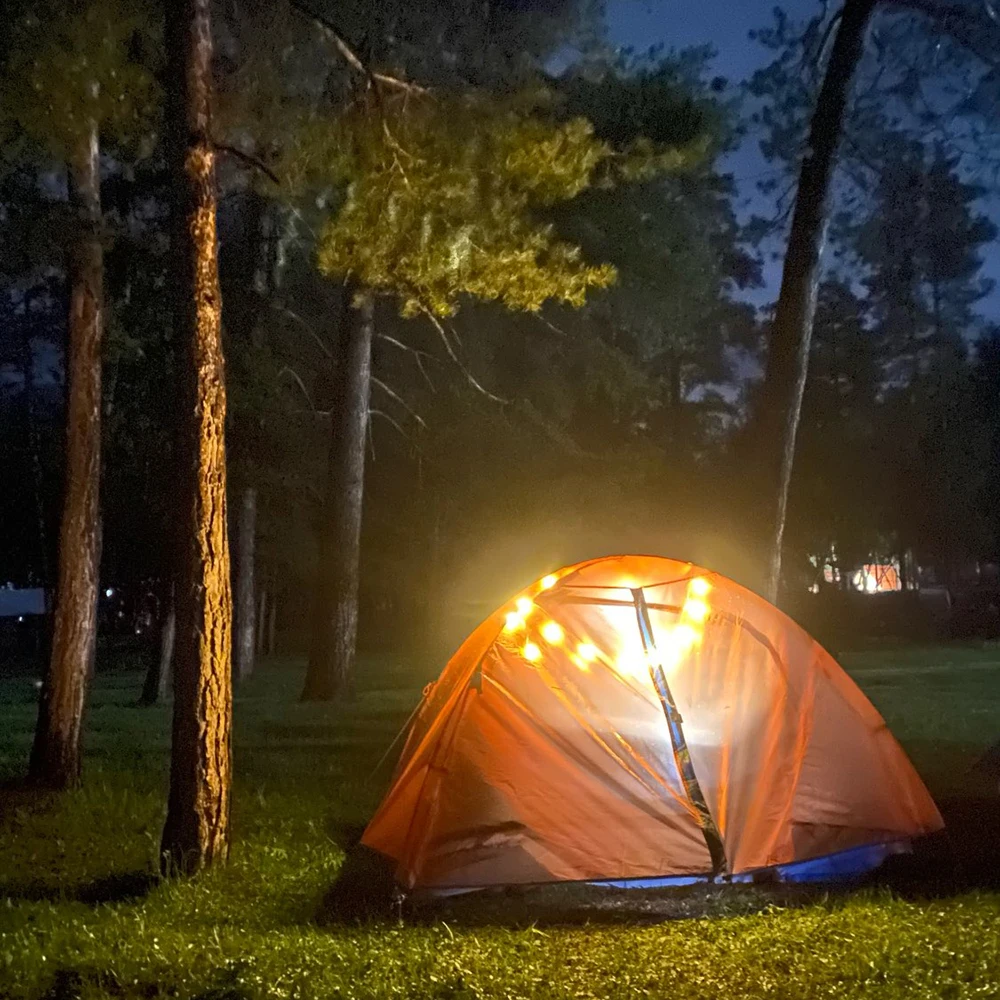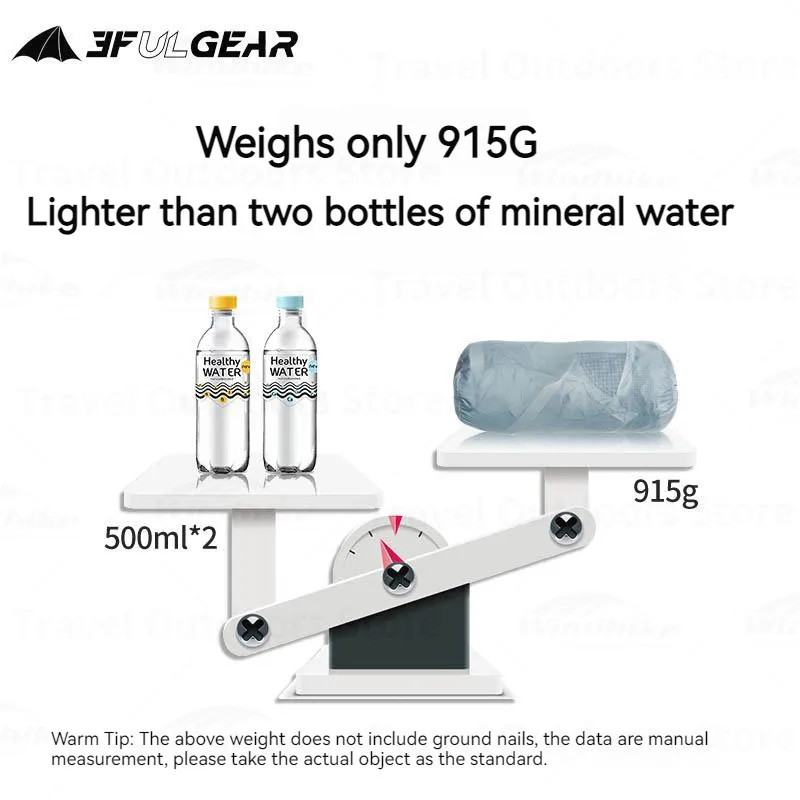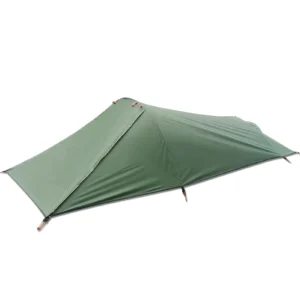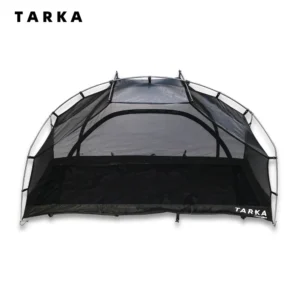Introduction: The Weight-Durability Dilemma in Ultralight Tents
The journey into ultralight backpacking often begins with a simple realization: every ounce matters. Yet, as hikers shed weight from their packs, they inevitably face a crucial question – at what cost to durability? This question becomes especially critical when considering shelter, the piece of gear that stands between you and the elements when you’re miles from civilization.
The concern is legitimate. Can a tent weighing less than 2 pounds truly withstand mountain storms, rocky terrain, and years of use? While traditional backpacking tents often prioritized robustness over weight, modern ultralight shelters challenge this old paradigm through innovative materials and construction techniques.
The ultralight revolution has dramatically changed what’s possible. Ten years ago, a 3-pound tent was considered lightweight; today, sub-2-pound shelters are commonplace. But this progress comes with both a price premium and persistent questions about longevity.
In this comprehensive guide, we’ll delve into the science behind ultralight tent durability, examining how modern materials and construction methods balance minimal weight with functional longevity. We’ll explore the properties of cutting-edge fabrics, identify critical construction elements that determine a tent’s lifespan, and provide practical maintenance strategies to maximize your investment.
Whether you’re considering your first ultralight purchase or looking to extend the life of your existing shelter, understanding the relationship between shelter options for two campers and their durability factors will help you make informed decisions. The defining characteristics that make a tent ultralight directly impact how long that tent will serve you on the trail.
Understanding Ultralight Tent Materials and Their Durability Properties
Before evaluating any ultralight tent, it’s essential to understand the basic terminology that describes material strength and performance:
- Denier (D): A measurement of fabric thickness. Lower numbers (like 7D or 10D) indicate thinner, lighter materials, while higher numbers (30D+) suggest more robust construction.
- Tear strength: How well fabric resists ripping once a tear has started.
- Hydrostatic head: Measured in millimeters (mm), this indicates water resistance. Higher numbers mean better waterproofing.
Dyneema Composite Fabric (DCF)
Previously known as Cuben Fiber, DCF represents the cutting edge of ultralight materials. This non-woven fabric consists of Dyneema fibers laminated between polyester films, creating an incredibly strong yet lightweight material.
Strengths:
– Exceptional strength-to-weight ratio
– Completely waterproof without additional coatings
– Doesn’t absorb water or stretch when wet
– Superior tear resistance
Weaknesses:
– Poor abrasion resistance compared to woven fabrics
– Degrades with prolonged UV exposure
– Difficult to repair in the field
– Significantly more expensive than other options
Silnylon
This silicon-impregnated nylon remains the most common ultralight tent material due to its balance of properties and cost.
Strengths:
– Good balance of weight, strength, and durability
– Relatively affordable
– Easily repaired with adhesive patches
– Good tear resistance
Weaknesses:
– Stretches when wet, requiring re-tensioning
– Moderate UV resistance
– Heavier than DCF for equivalent strength
Silpoly
Silicon-impregnated polyester addresses some of silnylon’s shortcomings while introducing its own considerations.
Strengths:
– Minimal stretching when wet
– Better UV resistance than silnylon
– Less expensive than DCF
Weaknesses:
– Slightly lower tear strength than comparable silnylon
– Less abrasion resistance than nylon
| Material | Weight | Tear Strength | Abrasion Resistance | UV Resistance | Water Resistance | Typical Lifespan | Relative Cost |
|---|---|---|---|---|---|---|---|
| DCF (Dyneema) | Lowest | Highest | Low | Moderate | Excellent | 500-1000 nights | $$$$ |
| Silnylon (15D) | Low | Good | Good | Moderate | Good (1500mm+) | 300-700 nights | $$ |
| Silnylon (20D) | Moderate | Very Good | Very Good | Moderate | Very Good (2000mm+) | 500-900 nights | $$ |
| Silpoly (20D) | Low-Moderate | Good | Moderate | Good | Very Good (2000mm+) | 400-800 nights | $$ |
Understanding these lightweight trekking shelter materials helps you make informed decisions when examining specifications. Many backpackers find that exploring various ultralight backpacking tent options reveals how different materials perform in real-world conditions.
Critical Construction Elements That Determine Tent Longevity
While materials receive most of the attention in discussions about ultralight tent durability, construction details often have an equally significant impact on longevity. Even the most advanced materials will fail prematurely if poorly assembled.
Seams and Stitching
The junction points of any tent represent potential failure points if not properly constructed:
- Factory seam taping: Provides immediate waterproofing and reinforcement
- Bound seams: Additional fabric binding that reinforces critical stress points
- Stitch density: More stitches per inch generally means stronger seams
- Reinforcement points: Extra material at guy-out points and high-stress areas
Tent Poles
Pole material and design significantly impact both weight and durability:
- Aluminum alloy (like DAC Featherlite): Offers excellent balance of strength and weight; can bend under extreme pressure but rarely catastrophically fails
- Carbon fiber: Extremely lightweight but more brittle; can snap rather than bend when overstressed
- Hub designs: Often stronger but add complexity and potential failure points
Trekking Pole Supported Designs
Many ultralight enthusiasts prefer trekking pole supported shelters for their weight savings and surprising durability benefits:
- Eliminates dedicated pole weight
- Uses stronger poles than many lightweight tent-specific poles
- Reduces parts that can break or malfunction
- Creates potential stress points at pole attachment locations
- Requires careful setup to distribute tension properly
Exploring various ultralight trekking pole tent options reveals significant construction differences between manufacturers.
Zippers
Often the first component to fail on well-made tents:
- YKK zippers: Industry standard for quality and durability
- Zipper size: #3 zippers save weight but wear faster than #5 or #8
- Zipper covers: Protect from dirt and reduce stress on teeth
- Pull tabs: More substantial tabs reduce zipper slider stress
Floor Construction
- Bathtub design height: Higher walls offer better splash protection
- Floor thickness: Often 2-5 denier higher than fly material
- Reinforced corners: Critical for preventing wear at high-stress points
Mesh and Inner Tent Materials
- No-see-um mesh: Standard for insect protection but susceptible to snags
- Mesh denier: Higher numbers increase durability but reduce breathability
- Attachment points: How the inner connects to the outer affects long-term durability
Real-World Lifespan: What to Realistically Expect
When discussing ultralight tent longevity, it’s important to shift perspective from years owned to nights used—a more accurate measure of actual wear. A weekend backpacker might use a tent 20 nights annually, while a thru-hiker could log 150+ consecutive nights.
Key Factors Affecting Lifespan
- Usage intensity: Weekend warrior vs. thru-hiker
- Environmental exposure: Desert sun degrades materials faster than forest shade
- Setup location: Rocky ground causes more wear than forest duff
- Storage practices: Long-term storage while damp dramatically reduces lifespan
- Temperature extremes: Repeated freeze-thaw cycles stress materials
Realistic Lifespan Expectations
With proper care and maintenance:
- Premium ultralight DCF tents: 500-1000 nights
- Quality silnylon/silpoly tents: 300-800 nights
- Budget ultralight tents: 100-300 nights
These numbers assume proper maintenance and reasonable conditions. Understanding the differences between single-wall vs. double-wall ultralight tents helps predict how design choices affect long-term durability.

Signs of Normal Aging vs. Premature Failure
Normal aging signs:
– Gradual fabric softening
– Minor pinholes in high-wear areas
– Slight color fading from UV exposure
– Decreased water repellency requiring retreatment
Premature failure indicators:
– Delamination of coatings
– Seam tape peeling extensively
– Zipper teeth separation
– Dramatic loss of waterproofing
– Tears along stress points
Common Failure Points and How to Prevent Them
Understanding where ultralight tents typically fail helps you focus your preventive efforts and inspections on the most vulnerable areas.
Fabric Degradation
Problem: UV damage, delamination, pinholes
Prevention:
– Pitch in shaded areas when possible
– Use UV-protective sprays on non-DCF fabrics
– Break down camp during extended daylight absences
– Use groundsheet to protect floor
Pole Failures
Problem: Bent segments, cracked ferrules, broken shock cord
Prevention:
– Assemble poles from the center outward
– Avoid forcing connections during setup
– Store fully assembled to reduce cord tension
– Carry repair splints for emergency fixes
Zipper Problems
Problem: Stuck sliders, separated teeth, broken pulls
Prevention:
– Regularly clean with soft brush
– Keep lubricated with zipper-specific products
– Use two hands when operating to reduce stress
– Open and close slowly, avoiding force
Floor Damage
Problem: Abrasion, punctures, waterproofing loss
Prevention:
– Use appropriate groundsheet
– Remove shoes inside tent
– Clear site of sharp objects before setup
– Apply seam sealer preventatively on high-wear areas
Exploring waterproof backpacking tent options reveals how different brands address these common failure points through design enhancements.
Essential Maintenance to Extend Your Ultralight Tent’s Life
Proper maintenance is perhaps the single most significant factor in maximizing ultralight tent lifespan. A well-maintained budget tent can outlast a neglected premium shelter.
Field Care Routine
- Setup: Ensure even tension to avoid stress points
- Takedown: Shake out debris before packing
- Packing: Fold/roll loosely rather than stuffing tightly
- Drying: Air dry completely before long-term storage
Cleaning Protocol
- Shake out loose dirt and debris
- Spot clean with mild soap and cold water
- Rinse thoroughly without submerging
- Air dry completely before storage
- Never machine wash or dry
Seasonal Maintenance
- Beginning of season:
- Inspect all seams and stress points
- Check and repair any mesh tears
- Test waterproofing with spray test
Ensure poles flex smoothly without cracks
End of season:
- Clean thoroughly
- Apply treatment products as needed
- Store loosely in cool, dry place
- Leave storage bag partially open for ventilation

Re-waterproofing Guidelines
- For silnylon/silpoly: Apply silicone-based repellent when water no longer beads
- For PU-coated fabrics: Use urethane-based sealer when interior feels tacky
- For DCF: Generally doesn’t require reproofing, but seams may need resealing
Implementing proper tent packing tips significantly reduces fabric creasing and stress during transportation. For specific maintenance requirements on different designs, examining ultralight freestanding tent product information often provides manufacturer recommendations.
Field Repair Techniques for Ultralight Tents
Even with meticulous care, emergency repairs are sometimes necessary in the backcountry. A well-prepared backpacker can address most common issues with a minimal repair kit.
Ultralight Repair Kit Essentials
- Tenacious Tape or similar adhesive patch (1 sq ft)
- Small tube of seam sealer
- Needle and thread (dental floss works in emergencies)
- 1-2 feet of repair cord (2mm diameter)
- Small multi-tool with scissors
- 3-4 inches of pole repair sleeve
Quick Fixes for Common Issues
Fabric Tears:
1. Clean and dry the damaged area
2. Apply adhesive patch to both sides if possible
3. Round the corners of your patch to prevent peeling
Broken Poles:
1. Align broken sections
2. Slide repair sleeve over the break
3. Secure with duct tape if necessary
Zipper Issues:
1. For stuck zippers, lubricate with chapstick or candle wax
2. For separated teeth, slowly work slider back to realign
3. For broken sliders, secure closed with safety pin until replacement
Leaking Seams:
1. Dry thoroughly
2. Apply thin line of seam sealer
3. Allow to cure completely before repacking
The structural differences between freestanding vs. non-freestanding ultralight tents affect repair approaches, particularly for pole damage.
The Durability-Weight-Cost Triangle: Making Smart Choices
When selecting an ultralight tent, you’re fundamentally navigating trade-offs between three competing variables: durability, weight, and cost. Improving any one typically requires compromising on at least one other.
Decision Framework Based On:
Trip Type and Duration:
– Weekend trips allow more weight allocation for durability
– Thru-hikes may prioritize weight savings above all
– Expedition use demands higher durability regardless of weight
Terrain Considerations:
– Dense forests with established sites: standard durability sufficient
– Rocky alpine zones: prioritize abrasion resistance
– Desert environments: focus on UV resistance
– Winter conditions: structural strength becomes paramount
Personal Risk Tolerance:
– How far from help will you typically be?
– What weather conditions might you encounter?
– How critical is shelter to your safety margin?
Lightweight Backpacking Tent, Ultralight Backpacking Tent, Ultralight Bivy Tent
Ultralight Single Person Camping Tent with Aluminum Poles for 3-Season Backpacking Waterproof DesignPrice range: $94.88 through $326.82 Select options This product has multiple variants. The options may be chosen on the product pageLightweight Backpacking Tent, Ultralight Backpacking Tent, Waterproof Backpacking Tent
$391.05 Select options This product has multiple variants. The options may be chosen on the product pageHeavy Duty 4 Season Tent, Mountaineering Tent, Winter Camping Tent
$870.40 Select options This product has multiple variants. The options may be chosen on the product pageUltralight Backpacking Tent, Ultralight Dome Tent, Winter Camping Tent
Price range: $369.63 through $370.07 Select options This product has multiple variants. The options may be chosen on the product pageHeavy Duty 4 Season Tent, Ultralight Freestanding Tent, Winter Camping Tent
$3,722.66 Select options This product has multiple variants. The options may be chosen on the product pageUltralight Backpacking Tent, Ultralight Trekking Pole Tent
Price range: $350.87 through $351.98 Select options This product has multiple variants. The options may be chosen on the product page
Understanding how to pick the perfect ultralight backpacking tent requires balancing these factors against your specific needs and preferences. The key is identifying which compromises align with your priorities.
FAQs: Key Questions About Ultralight Tent Durability
Can ultralight tents handle severe weather?
Yes, but with caveats. Modern ultralight tents can withstand significant weather challenges when properly pitched and guyed out. However, they generally have less margin for error than heavier designs. For extreme conditions, heavy-duty 4-season tents provide greater security but at a significant weight penalty.
Do freestanding or non-freestanding designs last longer?
Neither is inherently more durable. Non-freestanding designs eliminate some potential failure points (fewer poles) but require proper tensioning. Freestanding tents are more forgiving of setup errors but have more components that can fail.
Are footprints necessary or optional?
For ultralight tents with floors under 20D, a footprint is highly recommended for extending lifespan. For floors 30D+, footprints become more optional but still beneficial in rocky terrain.
Do more expensive tents actually last longer?
Generally yes, but with diminishing returns. The price difference between budget ($150) and mid-range ($300) tents often correlates strongly with durability improvements. The difference between mid-range and premium ($500+) models may reflect more subtle durability enhancements along with weight savings and design refinements.

How do you balance ventilation and durability?
More mesh means better ventilation but increased vulnerability. Look for designs that strategically place mesh to maximize airflow while protecting it from abrasion. Double-wall tents generally offer better ventilation options than comparable single-wall designs.
Striking the Balance: Maximizing Durability Without Sacrificing Weight
Finding the sweet spot between ultralight design and functional durability isn’t just about the initial purchase—it’s about understanding how materials, construction, usage patterns, and maintenance interact throughout a tent’s lifecycle.
The most durable ultralight tent isn’t necessarily the one with the heaviest materials, but rather the one whose design best matches your specific needs and receives proper care. Sometimes the most efficient way to reduce carried weight isn’t buying the absolute lightest tent, but finding one with the good weight-to-durability ratio for your adventures.
For weekend backpackers, prioritizing longevity through slightly heavier materials often makes sense. For thru-hikers, accepting some durability compromises for significant weight savings may be worth the trade-off, especially when paired with diligent maintenance.
At Explore Elements, we believe that understanding these nuances helps our customers make informed decisions that align with their backpacking style. The ultimate goal isn’t just reducing pack weight—it’s maximizing enjoyment of the wilderness through reliability you can trust, mile after mile and year after year.







